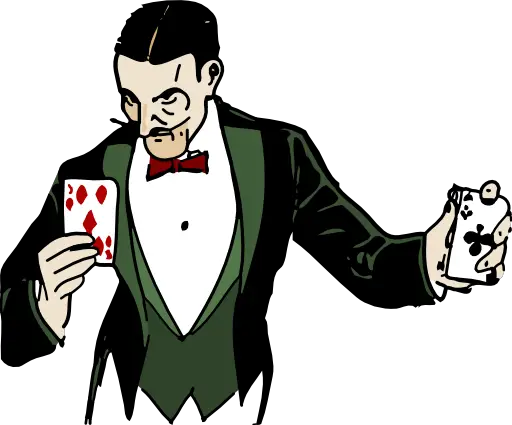Support our educational content for free when you purchase through links on our site. Learn more
Discover 10 Real-Life Mind Tricks Like the Jedi Mind Trick! 🪄
Have you ever wished you could influence someone’s thoughts or decisions with just a few words, much like the Jedi mind trick from Star Wars? Well, you’re in luck! In this article, we dive deep into the fascinating world of mind tricks and illusions that mirror the art of persuasion seen in the galaxy far, far away. From psychological techniques that enhance communication to captivating illusions that leave audiences spellbound, we’ll explore ten effective methods you can use in everyday life.
Imagine walking into a room and effortlessly guiding the conversation, making people feel understood and valued. Sounds like magic, right? Well, it can be! By mastering these techniques, you’ll not only enhance your social skills but also become a more persuasive communicator. Ready to unlock the secrets? Let’s jump in!
Key Takeaways
- Mind Tricks Are Real: Techniques like mirroring and labeling emotions can significantly influence conversations.
- Psychological Principles Matter: Understanding concepts like reciprocity and social proof can enhance your persuasive abilities.
- Practice Makes Perfect: The more you use these techniques, the more natural they will become in your interactions.
- Explore Related Topics: Check out our resources on Card Tricks and Magic Psychology for deeper insights.
- Get the Right Tools: Consider exploring books on persuasion like Influence: The Psychology of Persuasion by Robert Cialdini for a deeper understanding.
Ready to wield your newfound knowledge like a Jedi? Let’s dive into the mind-bending world of tricks and illusions! 🌟
Table of Contents
- Quick Tips and Facts
- The Fascinating History of Mind Tricks and Illusions
- Real-Life Mind Tricks: Techniques That Work Like Jedi Mind Tricks
- Psychological Principles Behind Mind Tricks
- Top 10 Mind Tricks You Can Use in Everyday Life
- Famous Illusions That Dazzle and Confuse
- The Science of Persuasion: How to Influence Others
- Mind Tricks in Pop Culture: From Movies to Magic Shows
- Community Insights: What People Are Saying About Mind Tricks
- Explore Related Topics: Dive Deeper into the World of Mind Tricks
- Conclusion
- Recommended Links
- FAQ
- Reference Links
Quick Tips and Facts
- Mind Tricks are psychological techniques that can influence thoughts and behaviors, similar to the Jedi mind trick from Star Wars.
- Mirroring is a powerful technique where you repeat the last few words someone says, making them feel understood and more likely to cooperate. (Source: Chris Voss)
- The Illusion of Control can be achieved by asking “what” or “how” questions, empowering the other person while guiding the conversation.
- Famous Illusions can create a sense of wonder and confusion, making them perfect for entertainment and education.
- Practice makes perfect! The more you use these techniques, the more natural they will become.
The Fascinating History of Mind Tricks and Illusions
Mind tricks have been a part of human interaction for centuries, often rooted in psychology and social dynamics. The concept of influencing others dates back to ancient civilizations, where orators and leaders used persuasive techniques to sway public opinion.
The Evolution of Mind Tricks
- Ancient Rhetoric: Philosophers like Aristotle emphasized the importance of persuasion in communication.
- Modern Psychology: The study of cognitive biases and social influence has led to the development of techniques like NLP (Neuro-Linguistic Programming) and mirroring.
- Pop Culture Influence: Movies like Star Wars popularized the idea of mind tricks, making them a staple in modern storytelling.
Understanding the history of these techniques can enhance your ability to use them effectively in daily life!
Real-Life Mind Tricks: Techniques That Work Like Jedi Mind Tricks
While the Jedi mind trick is a fictional concept, many real-life techniques can achieve similar results. Here are some methods you can employ:
1. Mirroring
- What it is: Repeating the last few words someone says.
- Why it works: It creates rapport and encourages the other person to elaborate.
- Example: If someone says, “I really think we should go with option A,” you might respond, “So you think we should go with option A?”
2. Labeling Emotions
- What it is: Acknowledging the emotions of others.
- Why it works: It validates feelings and fosters connection.
- Example: “It seems like you’re feeling frustrated about this situation.”
3. The “That’s Right” Technique
- What it is: Paraphrasing someone’s perspective to elicit agreement.
- Why it works: It builds trust and understanding.
- Example: “You’re concerned about the impact on your team, and you want to ensure everyone is on board.”
4. The Illusion of Control
- What it is: Asking open-ended questions.
- Why it works: It gives the other person a sense of power.
- Example: “How do you think we should approach this problem?”
5. Utilizing Silence
- What it is: Pausing after asking a question.
- Why it works: It encourages the other person to fill the silence, often leading to more information.
- Example: After asking, “What do you think we should do next?” remain silent.
Psychological Principles Behind Mind Tricks
Understanding the psychology behind these techniques can enhance your effectiveness. Here are some key principles:
Cognitive Biases
- Confirmation Bias: People tend to favor information that confirms their existing beliefs. Use this to your advantage by framing your suggestions in a way that aligns with their views.
Social Proof
- What it is: People are influenced by the actions of others.
- Application: Highlight how others have benefited from a particular decision or action.
Reciprocity
- What it is: When you do something for someone, they feel compelled to return the favor.
- Application: Offer help or support first, and they may be more inclined to assist you later.
Top 10 Mind Tricks You Can Use in Everyday Life
Here’s a list of mind tricks that can help you navigate social situations more effectively:
- Mirroring – Repeat the last few words.
- Labeling Emotions – Acknowledge feelings.
- The “That’s Right” Technique – Paraphrase to build rapport.
- The Illusion of Control – Ask open-ended questions.
- Utilizing Silence – Pause for effect.
- Anchoring – Use a reference point to influence decisions.
- Scarcity – Highlight limited availability to increase desire.
- Framing – Present information in a way that emphasizes benefits.
- Foot-in-the-Door Technique – Start with a small request before making a larger one.
- Social Proof – Use testimonials or examples of others who have succeeded.
Famous Illusions That Dazzle and Confuse
Illusions have captivated audiences for centuries. Here are some famous examples that showcase the art of deception:
1. The Vanishing Elephant
- Magician: David Copperfield
- Description: A massive elephant disappears from the stage, leaving the audience in awe.
2. The Floating Lady
- Magician: Dynamo
- Description: A woman appears to float in mid-air, defying gravity.
3. The Card Trick
- Magician: Derren Brown
- Description: A seemingly impossible prediction of a chosen card, showcasing psychological manipulation.
4. The Bullet Catch
- Magician: Various
- Description: A performer catches a bullet fired from a gun, a classic and dangerous illusion.
These illusions not only entertain but also demonstrate the power of perception and suggestion.
The Science of Persuasion: How to Influence Others
Persuasion is an art and a science. Here are some techniques based on psychological research:
Key Techniques
- Reciprocity: People feel obliged to return favors.
- Commitment: Once someone commits to something, they are more likely to follow through.
- Authority: People tend to obey authority figures, so establish credibility.
Practical Application
- Use these principles in negotiations, sales, or everyday conversations to enhance your influence.
Mind Tricks in Pop Culture: From Movies to Magic Shows
Pop culture has a significant impact on how we perceive mind tricks. Here are some notable examples:
Movies
- Star Wars: The Jedi mind trick has become iconic, representing the power of suggestion.
- Inception: Explores the concept of planting ideas in someone’s mind.
Magic Shows
- David Blaine: Known for his psychological illusions that challenge perceptions of reality.
- Penn & Teller: Use humor and wit to expose the mechanics behind magic tricks while still leaving audiences in awe.
These representations shape our understanding and expectations of mind tricks in real life.
Community Insights: What People Are Saying About Mind Tricks
Feedback from our community reveals a wealth of experiences with mind tricks:
- User Review: “I used mirroring in a business meeting, and it completely changed the dynamic. People were more open to my ideas!”
- Discussion: Many users find that practicing these techniques enhances their confidence in social situations.
Engaging with others can provide valuable insights and tips for mastering these skills!
Explore Related Topics: Dive Deeper into the World of Mind Tricks
If you’re fascinated by mind tricks, consider exploring these related topics:
- Card Tricks – Learn how to perform amazing card tricks.
- Magic Psychology – Delve into the psychology behind magic and illusions.
- Levitation – Discover the secrets behind levitation tricks.
- Kids Magic – Fun tricks for children to learn and perform.
- Coin and Money Tricks – Master the art of coin manipulation.
These resources can help you expand your knowledge and skills in the world of magic and persuasion!
Conclusion
Mind tricks and illusions are not just for magicians; they are powerful tools that can enhance your communication and influence in everyday life. By understanding the techniques and principles behind these tricks, you can navigate social situations with confidence and finesse. So why not give them a try? You might just find yourself wielding your own version of the Jedi mind trick!
Recommended Links
- Jedi Mind Trick Explained – Dive deeper into the world of Jedi mind tricks.
- Magic Psychology Insights – Explore the psychological aspects of magic.
FAQ
Q: Can anyone learn these mind tricks?
A: Absolutely! With practice, anyone can master these techniques.
Q: Are these tricks ethical?
A: It’s essential to use them responsibly and with good intentions.
Reference Links
- Chris Voss on Negotiation Techniques
- Star Wars Fandom on Mind Tricks
- Psychological Principles of Persuasion
Now that you have all the tools at your disposal, go out there and start practicing your mind tricks! 🪄✨
Conclusion
In our exploration of mind tricks and illusions, we’ve uncovered a fascinating world where psychology meets persuasion. From techniques like mirroring and labeling emotions to the captivating performances of magicians, these tools can empower you to influence others effectively. While the Jedi mind trick may be a fictional concept, the principles behind it are very much real and applicable in everyday life.
Summary of Positives and Negatives
Positives:
- Effective Communication: Mind tricks enhance your ability to connect and communicate with others.
- Versatile Techniques: These methods can be applied in various contexts, from personal relationships to professional negotiations.
- Engaging and Fun: Learning and practicing these tricks can be enjoyable and entertaining, making you the life of the party!
Negatives:
- Ethical Considerations: Misusing these techniques can lead to manipulation and distrust.
- Requires Practice: Mastering these skills takes time and effort, and results may vary based on individual circumstances.
In conclusion, we confidently recommend that you explore and practice these techniques responsibly. They can significantly enhance your interpersonal skills and help you navigate social situations with ease. So, go ahead and wield your newfound knowledge like a Jedi! 🌟
Recommended Links
- 👉 Shop Books on Persuasion Techniques:
- Never Split the Difference: Negotiating As If Your Life Depended On It by Chris Voss: CHECK PRICE on Amazon
- Influence: The Psychology of Persuasion by Robert Cialdini: CHECK PRICE on Amazon
FAQ
What are some real-life persuasion techniques that can manipulate people’s minds?
Understanding Persuasion Techniques
Real-life persuasion techniques include reciprocity, where offering something first creates an obligation to return the favor, and scarcity, which makes an item more desirable when it’s perceived as limited. Techniques like anchoring, where an initial piece of information sets the tone for subsequent decisions, also play a crucial role in influencing behavior.
Read more about “How to Trick Other People’s Minds: 10 Mind-Bending Techniques! 🧠✨”
Can hypnosis be used as a form of mind control similar to the Jedi mind trick?
The Role of Hypnosis
Hypnosis can indeed influence thoughts and behaviors, but it’s not mind control in the traditional sense. Hypnosis involves guiding someone into a trance-like state where they are more open to suggestions. While it can be effective for therapeutic purposes, ethical considerations must be taken into account, as consent is crucial.
How do mentalists and magicians use suggestion and persuasion to create illusions?
The Art of Suggestion
Mentalists and magicians employ various techniques, including misdirection, suggestion, and psychological principles. They create an environment where the audience’s attention is diverted, allowing them to perform seemingly impossible feats. By understanding human psychology, they can manipulate perceptions and create illusions that astonish.
What is the science behind psychological manipulation and mind control?
Psychological Foundations
Psychological manipulation often relies on cognitive biases, such as the foot-in-the-door technique, where small requests lead to larger ones. Understanding how people think and make decisions allows manipulators to influence behavior subtly. Research in social psychology provides insights into these mechanisms, showcasing how easily perceptions can be altered.
Read more about “Can You Resist the Jedi Mind Trick? 7 Secrets Revealed! 🧠✨”
Are there any historical examples of mind tricks and illusions being used to influence people’s decisions?
Historical Context
Throughout history, leaders and orators have used persuasive techniques to sway public opinion. For instance, during political campaigns, candidates often employ rhetoric that resonates with voters’ emotions and beliefs, effectively using mind tricks to gain support. Historical figures like Martin Luther King Jr. utilized powerful speeches to inspire and influence societal change.
Can neuro-linguistic programming be used to create a real-life Jedi mind trick effect?
NLP and Its Applications
Neuro-linguistic programming (NLP) involves understanding and changing thought patterns to influence behavior. Techniques such as anchoring and reframing can create effects similar to the Jedi mind trick by altering perceptions and responses. While NLP has its advocates, it’s essential to approach it with a critical mindset, as scientific backing varies.
How do con artists and scammers use mind tricks and illusions to deceive people?
The Dark Side of Persuasion
Con artists often exploit psychological principles to manipulate their victims. Techniques such as social proof, where they create a false sense of legitimacy, and urgency, pushing for quick decisions, are common. Understanding these tactics can help individuals recognize and avoid scams.
Reference Links
- Chris Voss on Negotiation Techniques
- Star Wars Fandom on Mind Tricks
- Psychological Principles of Persuasion
- Neuro-Linguistic Programming
- Influence: The Psychology of Persuasion by Robert Cialdini
By exploring these resources, you can deepen your understanding of mind tricks and their applications in everyday life. Happy practicing! 🪄✨









